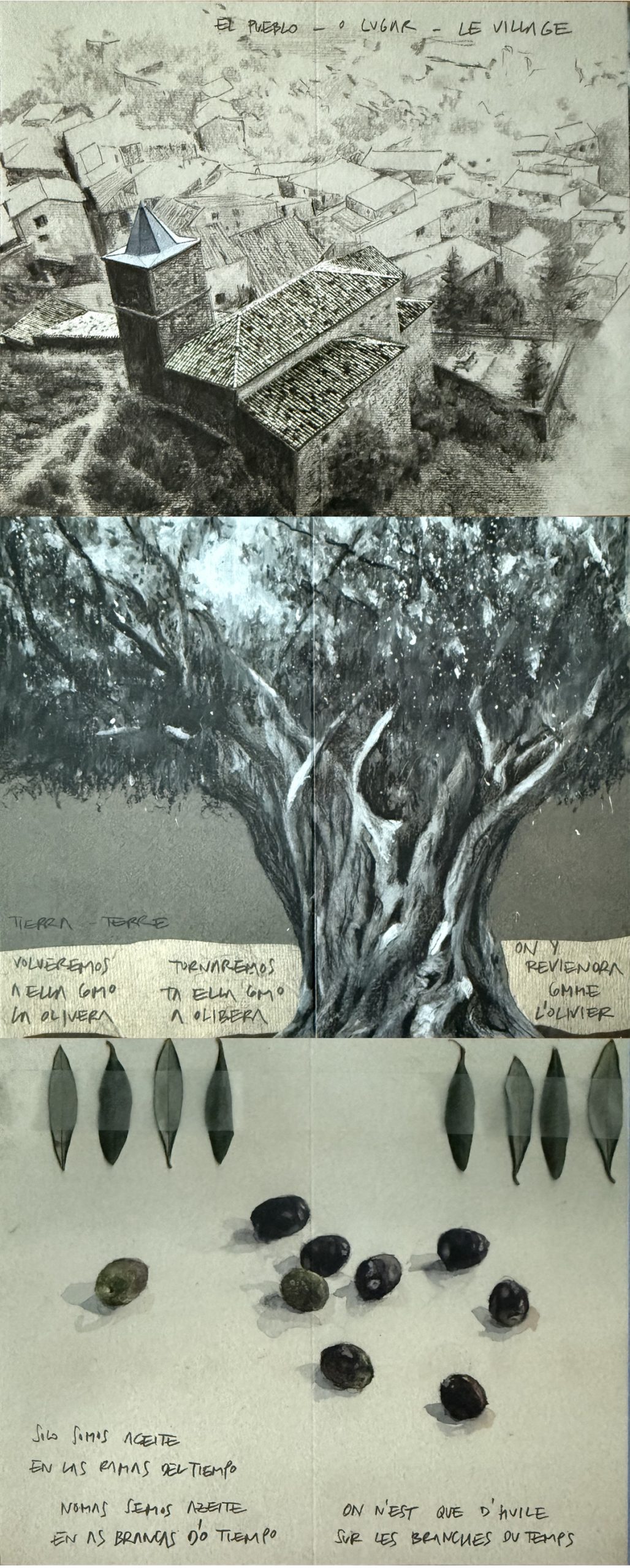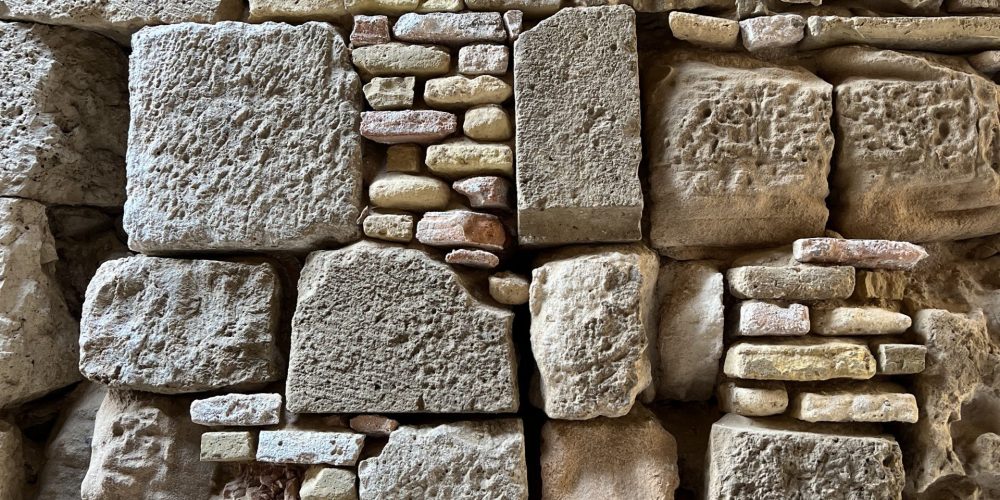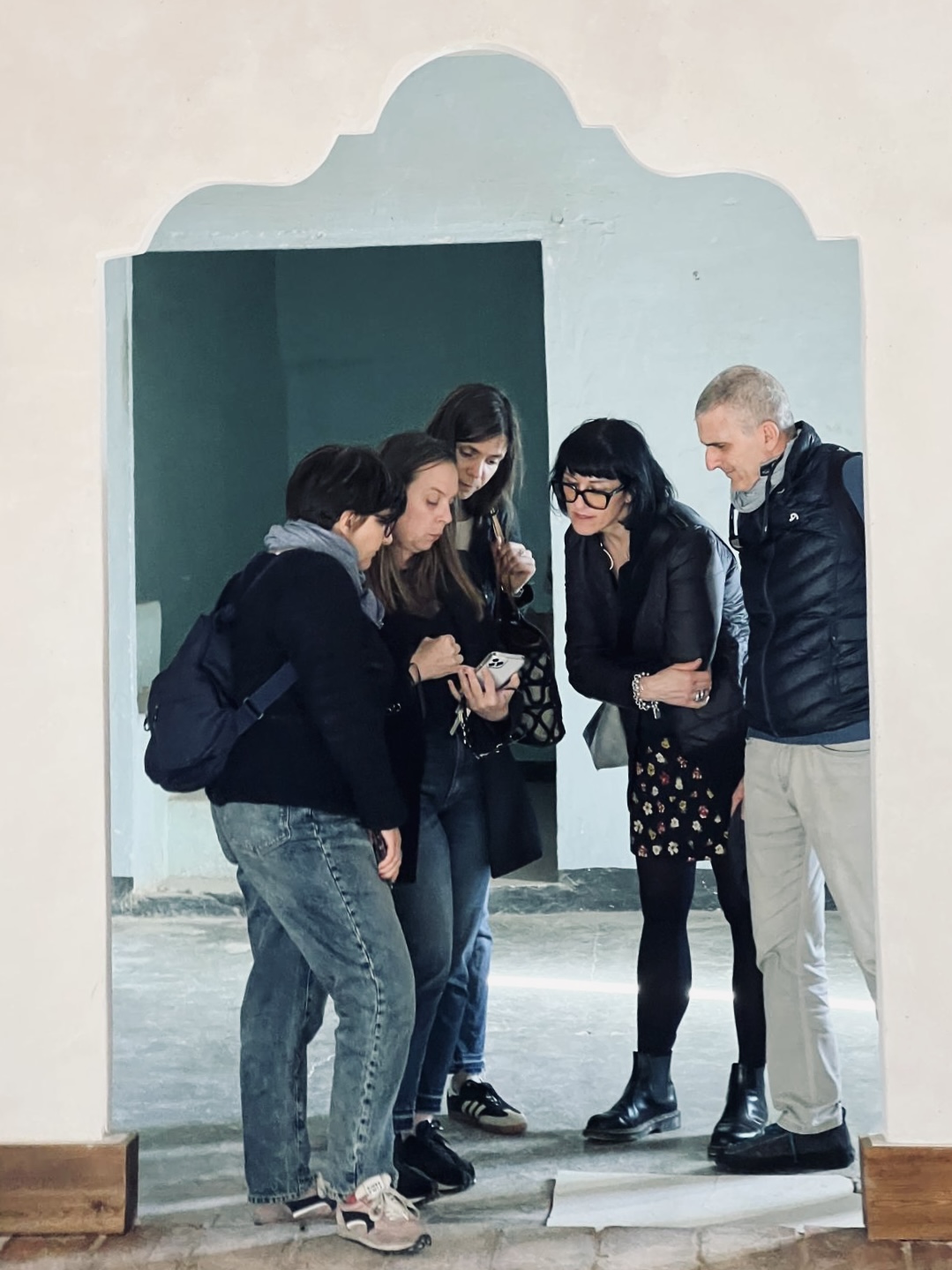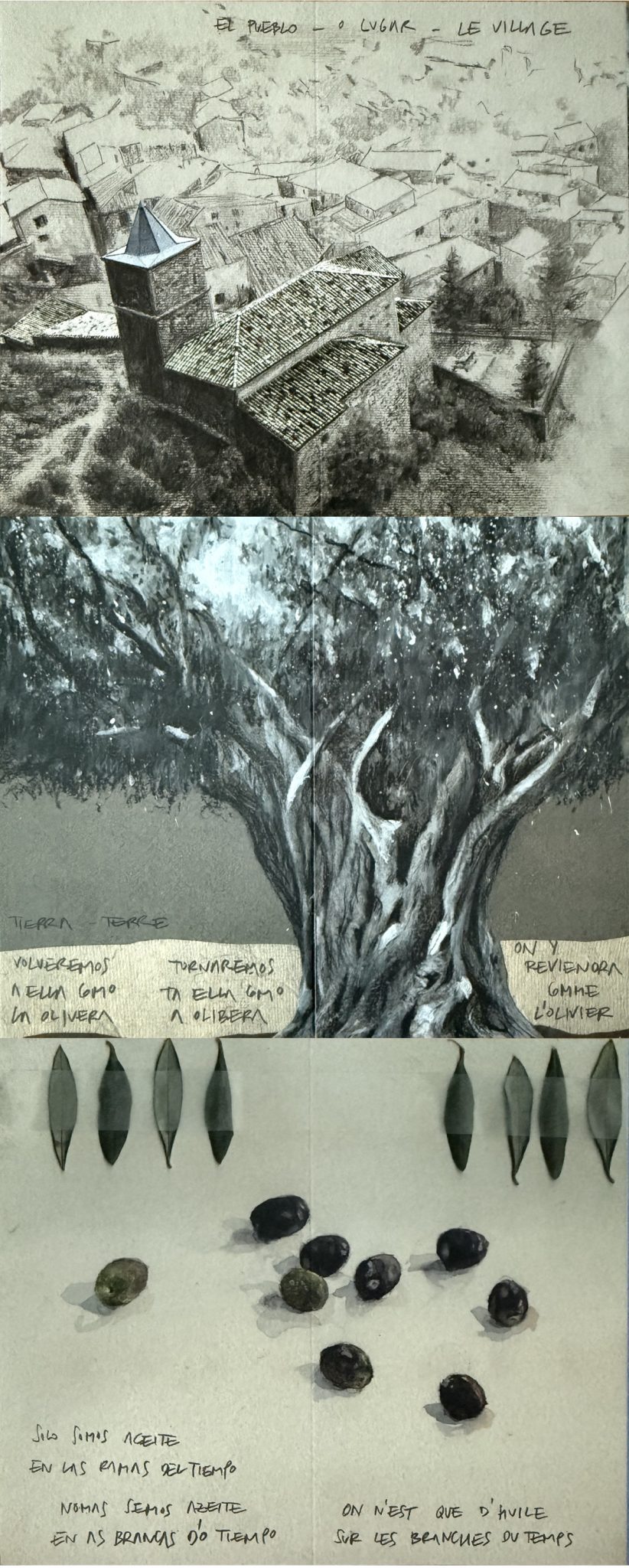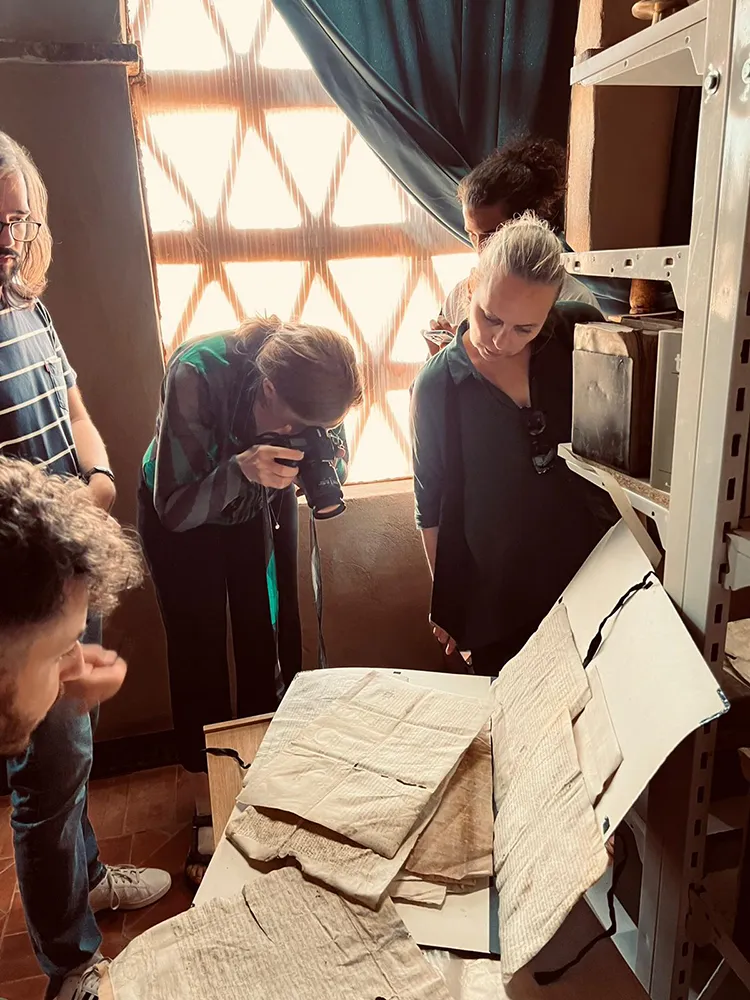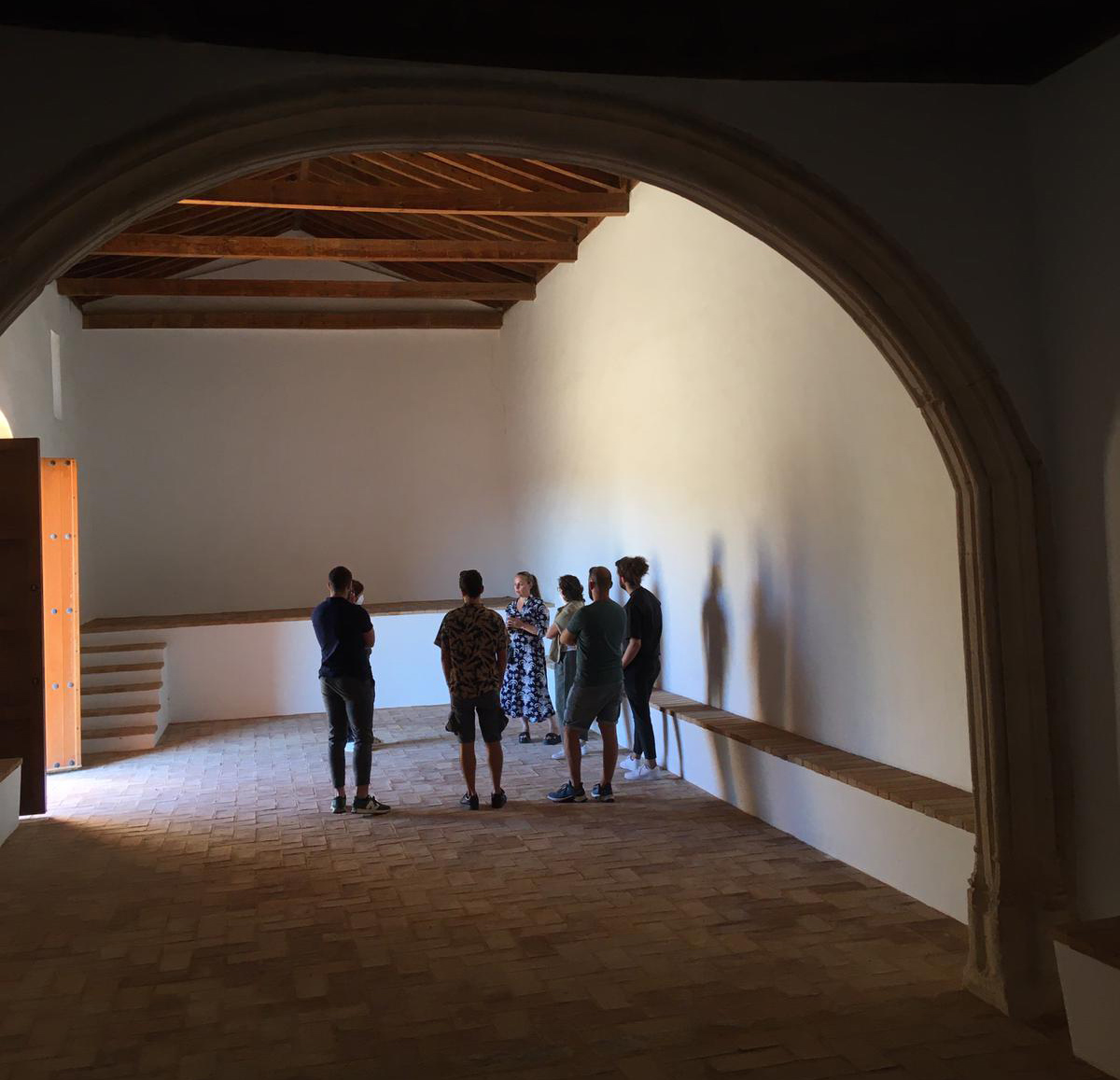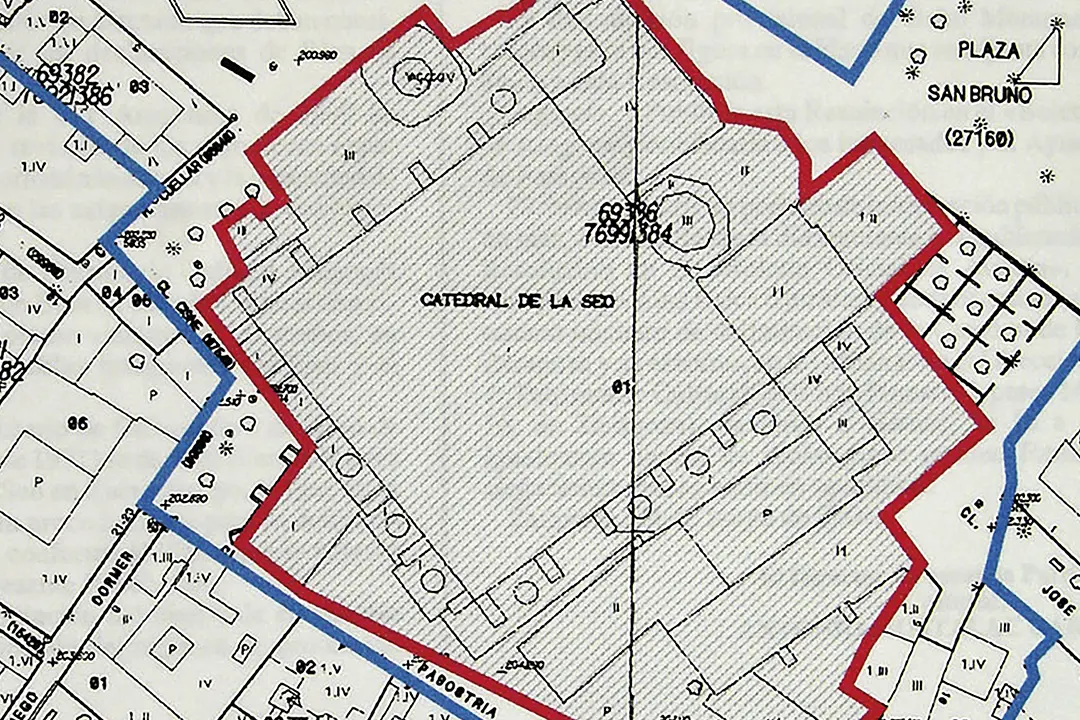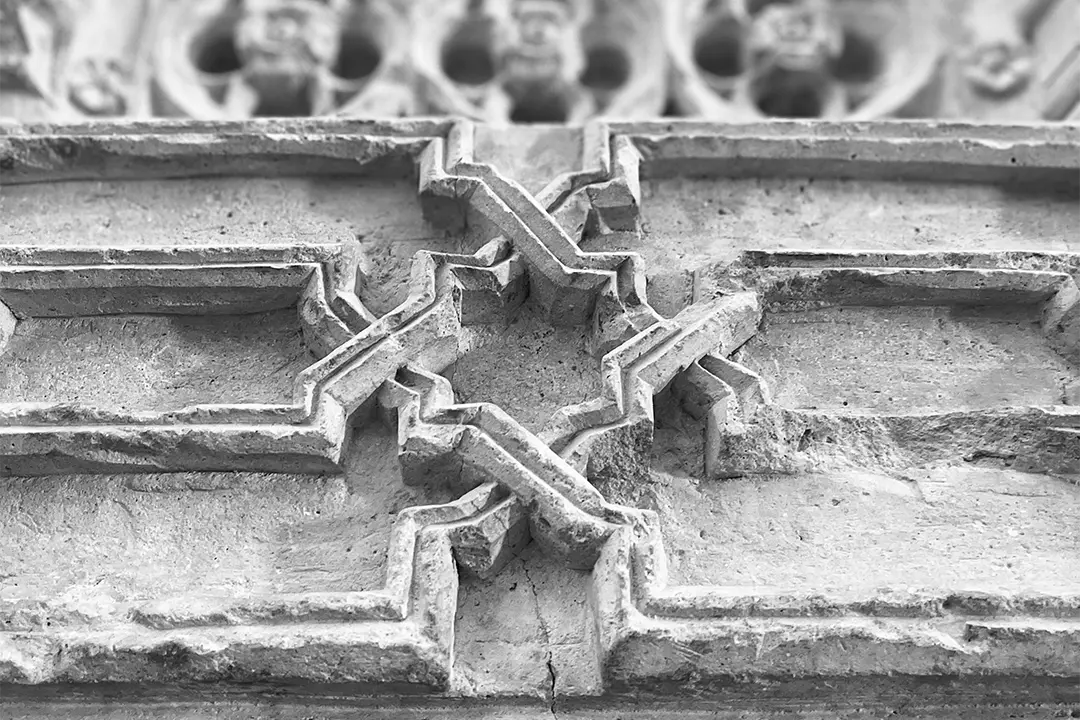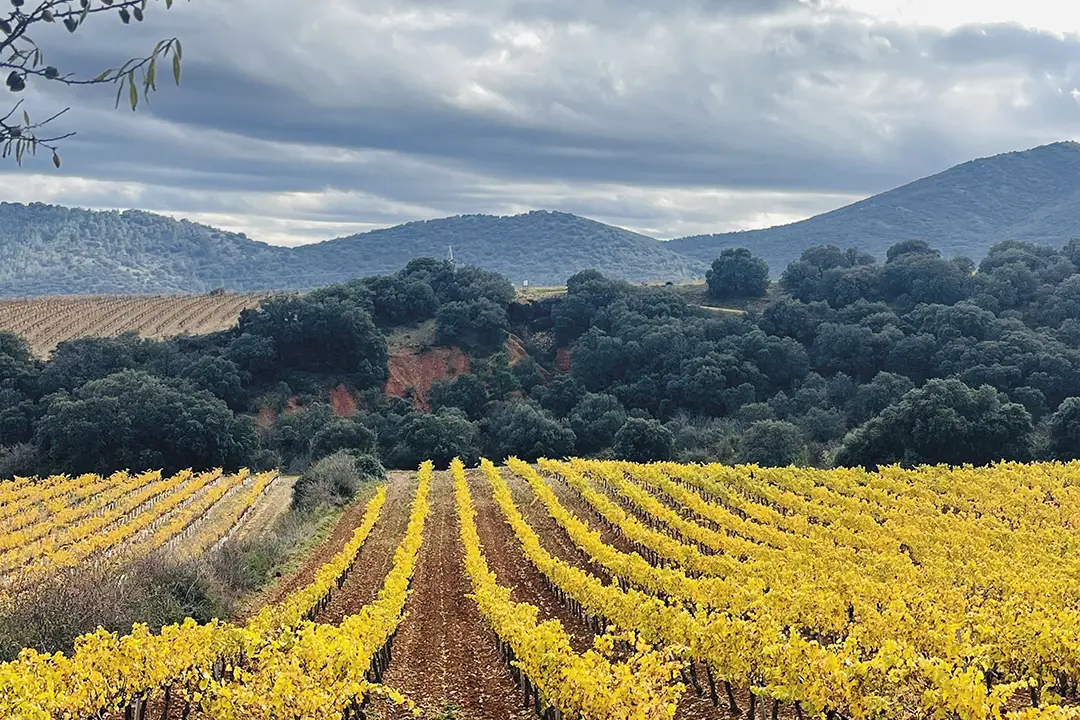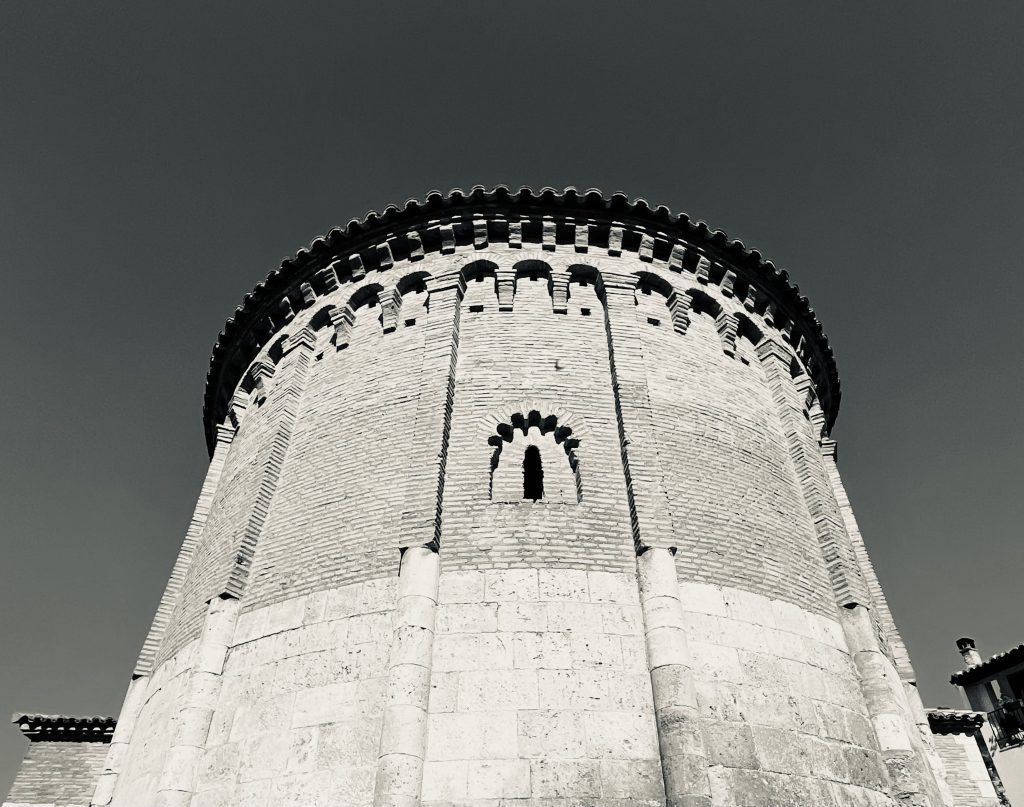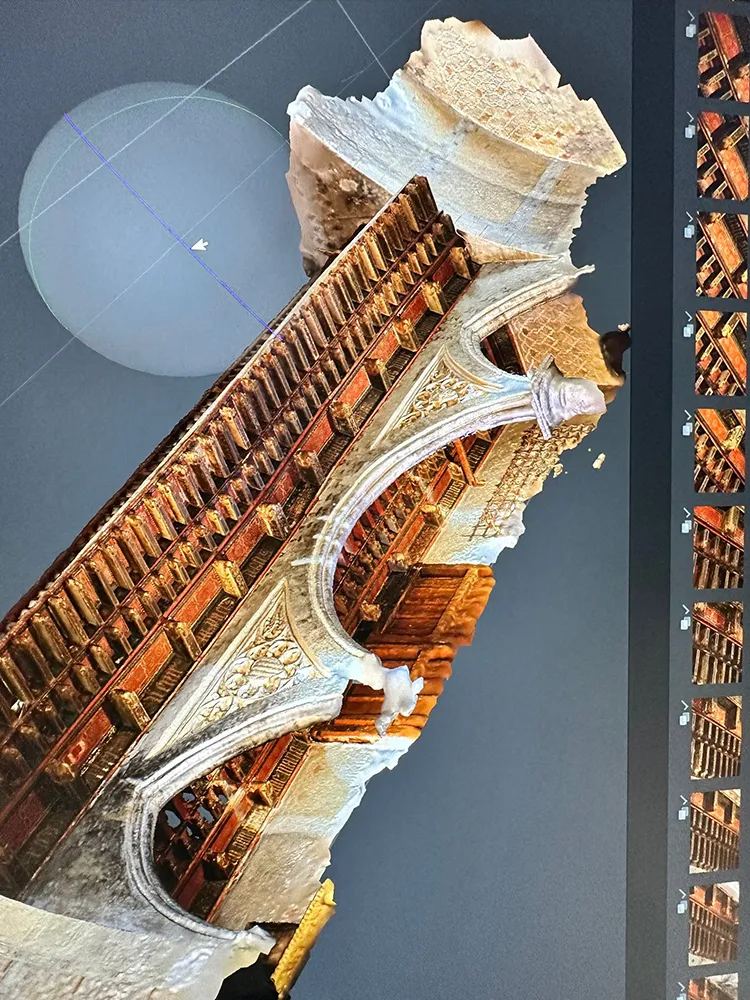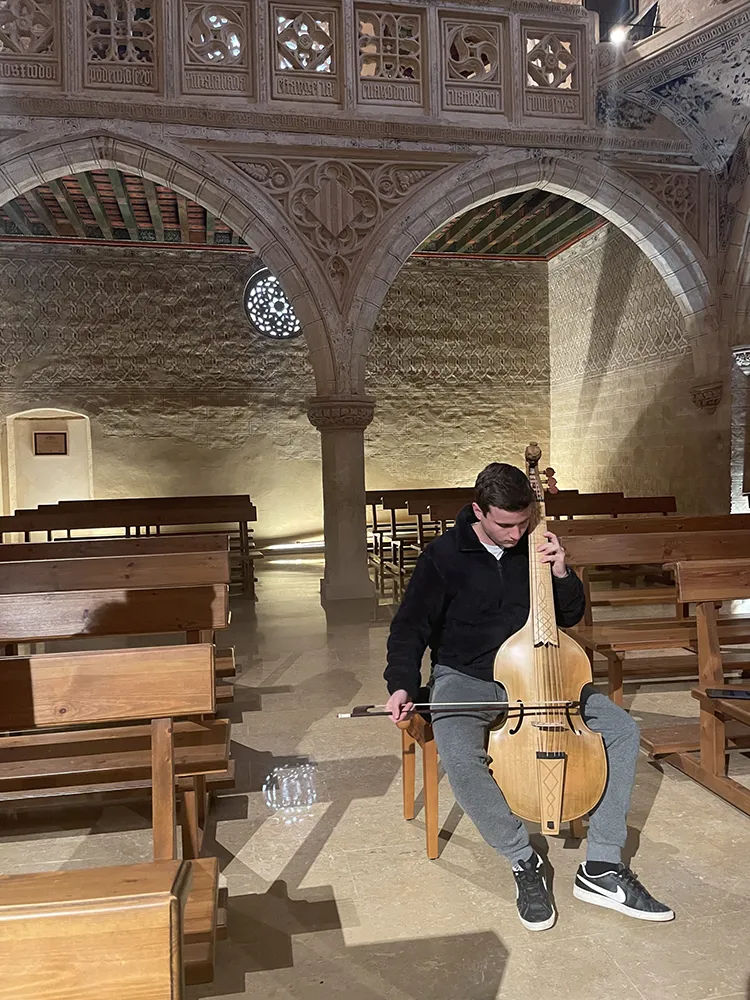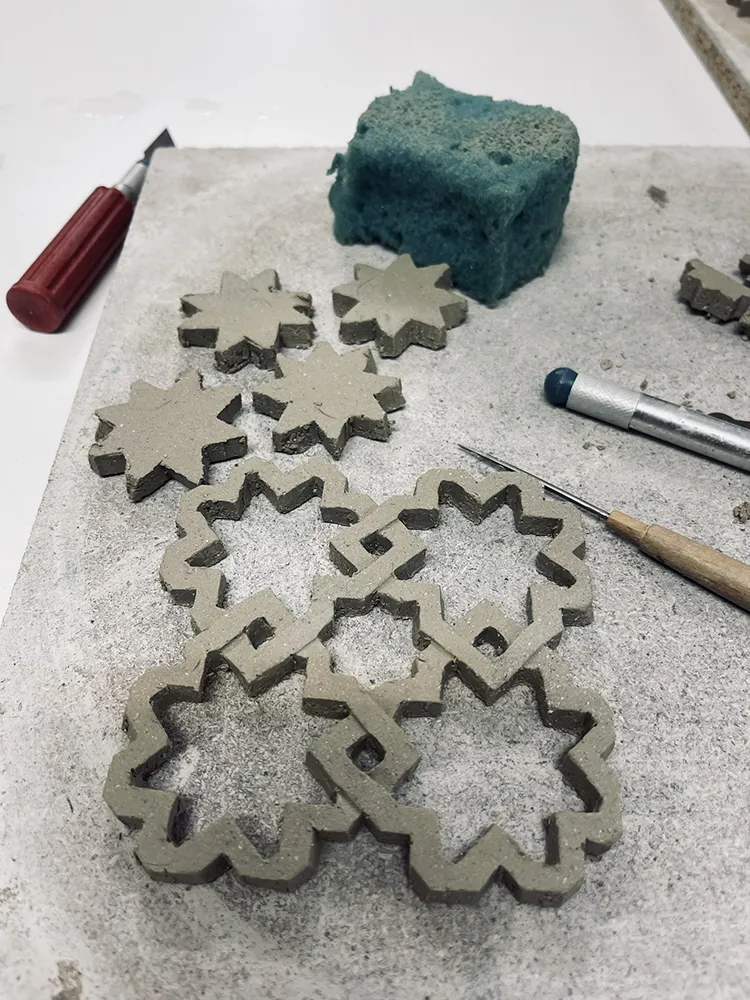GENERAL PRINCIPLES
1/ Subject matter and scope
The purpose of this call for proposals is to continue the project of Creative Laboratory, a programme supporting creation through the awarding of AN ARTISTIC RESIDENCY for creators, researchers, artists and professionals from any artistic and creative discipline who can draw on historical, artistic, cultural and natural heritage as a reference, particularly in this call for proposals. concept of cultural landscape, from the member towns of Territorio Mudéjar for the development of an idea, artistic research or a highly innovative project that generates new data and new ways of understanding the territory and its towns.
The proposals must include as a fundamental part of their development a stay or justified time of residence in one or more of the localities of Territorio Mudéjar.
In general, we seek projects with an inspiring and innovative outlook that link the transformative potential of the local sphere to a global and networked vision, that devote time to thinking about the challenges of today’s society, and that rely on technology to evolve the social fabric and artistic languages.
The procedure for awarding grants will be processed on a competitive basis according to the assessment criteria established in the call for applications and, in accordance with Article 22.1 of Law 38/2003, of 17 November, General Law on Subsidies.
2/ Context
The Cultural Landscape, if defined in its most orthodox sense as “the result of the interaction over time between people and the natural environment, expressed as a territory perceived and valued for its cultural qualities, the product of a process and the foundation of a community’s identity”, in the area covered by the Territorio Mudéjar association of villages, we could talk about a monumental, historical-artistic, tangible or intangible heritage, the understanding of which requires knowledge of the urban or natural environment in which it is located and the history of the villages through the economic activities of their inhabitants, which in most cases is directly linked to the uses of the landscape that have historically sustained the communities.
Wine landscape, cultural landscape
Twenty of the forty-nine member towns of the Territorio Mudéjar network are part of a protected designation of origin for wine. Specifically, the PDOs of Cariñena, Calatayud and Campo de Borja.
The vineyard landscape and the historical wine production process form part of the idiosyncrasy of the towns belonging to Territorio Mudéjar, bearing in mind that the use of natural resources, historical economic processes and the history of the towns have been fundamental in understanding the current locations and their heritage identity. Occasionally, this has generated significant economic prosperity, which may have been the origin of many of the monumental, urban or landscape heritage sites that we preserve today. A landscape, shaped as a wine landscape since the 2nd century AD, has been a key feature and determining factor to this day.
In this regard, the year 2025 is indisputably linked to the selection of the city of Cariñena as European Wine City 2025, an award promoted by RECEVIN, the European Network of Wine Cities.
To support the work programme developed by the city of Cariñena during 2025, the Territorio Mudéjar association has designed a special call for applications within the Artistic Residency category to investigate, from the methodology of art practice, the framework for proposals on heritage, art and cultural landscape.
General objectives:
- Promote awareness of rural areas based on their heritage identity through innovative approaches whose main purpose is to have a positive impact on villages.
- To encourage work with a high territorial impact developed from the experience of the habitability of the peoples.
- Assist in the creation and implementation of a network with a shared vision of the potential of heritage, cultural and natural resources, helping to strengthen other sectors through interdisciplinary and collaborative work.
- To create mechanisms for social participation in the generation of ideas based on heritage resources from an artistic thinking perspective.
Specific objectives:
- To promote knowledge about heritage resources and their impact on the environment from an artistic point of view, in order to encourage the implementation of projects, contribute to better protection and promote the conservation of the Mudejar heritage of the villages.
- Contribute to a better understanding of the concept of Cultural Landscape and to a transdisciplinary view of the heritage elements that comprise it.
- To support a framework for the emergence of ideas based on life in the villages of the Mudejar Territory.
- To support the possibility of experiencing the village in a real way, without artifice, its environment and its dynamics in order to facilitate the creative process of artists whose work helps to make rural heritage spaces known as places of avant-garde and creative innovation.
Areas of strategic knowledge addressed in Territorio Mudéjar:
- New perspectives on Mudejar art
- Updating data and knowledge on Mudejar heritage in all its diversity: monumental, urban, ethnographic, linguistic, agricultural, hydraulic, geographical, materials, processes, etc.
- Technical languages applied to the Mudejar: planimetry, photogrammetry and Mudejar 3D.
- Geolocation, cartographies and maps.
- Any subject that will broaden the scientific base on Mudejar art.
- Strategic management of Mudejar heritage. Heritage, cultural landscape and urban landscape
- New models of use beyond the classical classic concept of ” tourist or leisureuse “.
- Methodologies applied based on “Authenticity Criticism” and “Preventive Conservation”
- Physical, economic and intellectual accessibility studies
- Future models for conservation or intervention.
- Property resources and the actions of individuals
- Natural and socialcontexts
- Interactions between landscape and monumentality
- Mudejar heritage: Communication, dissemination and social function as key elements of territorial development
- Mudejar heritage and the media
- New media discourses
- Interpretation and ways of accessibility to knowledge of the Mudejar heritage
- The emotional bond as a key element for the care, protection and management of heritage.
- Population Contexts: The Value of Intergenerational Experience
- Social participation in the valorisation, exchange and collective construction of knowledge and new forms of learning.
- Creative Laboratory through artistic practice and the creation of new data derived from the physical creative residency in the villages of Territorio Mudéjar to highlight them as spaces for thought where new paths can be explored through artistic practice.
NEW CALL FOR APPLICATIONS 2025-2026: Support for the designation of Cariñena as European Wine City 2025
The new call for artistic residencies and stays for 2025-2026 incorporates strategic alliances with various collaborating entities and national and international projects that will enable issues of interest for the management and conservation of Mudejar heritage resources and their short-, medium- and long-term impact on the partner towns of Territorio Mudéjar to be addressed.
This scholarship is part of the Laboratory Project for “Artistic Residencies” that works in the villages of the Mudéjar Territory to raise their profile as spaces for thought where new paths can be explored through artistic thinking.
Proposals may be integrated into any of the artistic disciplines or present a combination of disciplines: visual arts, music, dance, theatre, audiovisual and transmedia languages, design and technological languages, etc.
Proposals must include plans for a STAY in a selection of villages in the Mudéjar Territory in order to measure the impact of the actual residence or stay in the territory by proposing a dialogue with the environment and local communities in which it is located.
To this end, projects submitted must include a proposed residency schedule in at least three partner locations within the Territorio Mudéjar network, one of which must be Cariñena, in its capacity as European Wine City 2025. At least two other locations within the network must also be chosen in order to demonstrate the impact on the rest of the territory.
Proposed themes and artistic languages
Although the general theme is Cultural Landscape and its development in the Wine Landscape, the artistic practice proposals are open and offer the possibility of interaction with some of the areas we consider to be of interest, such as the following:
- Artistic creation and research based on intellectual concepts and their reflection in the material, form or processes that characterise heritage in its broadest definition.
- Crafts as a living space past, present and future. New considerations from creative thinking or from historical use linked to the establishment and maintenance of historical and current communities.
- Sound, acoustics, speech, looking and listening.
- The real or imagined movement. The heritage space as a space for emotional learning of contents.
- The exploration of an “other place”, real or imaginary, specific or heterogeneous, natural or artificial, temporary or timeless in the heritage space.
- The construction of virtual space or metaverse based on the need for physical heritage space to exist, or as a connecting thread. Thoughts, proposals and possibilities.
3/ Applicants
Participation is open to national or international creators without legal status who meet all the requirements of this call for proposals.
The applicant may be at an early or intermediate stage of his/her research career or creative activity and must provide proof of the following:
- Training related to the areas covered by the call.
- Documentary evidence of at least two years of creative or professional experience – paid or unpaid.
- Professional experience shall be understood to mean the completion of specialised studies related to the arts or to one of the proposed fields of work, totalling a minimum of two years of effective training and involving work using “artistic project” methodologies.
The call is not open to legal entities of any kind: companies, partnerships, associations, communities of property or groups under any other type of legal associative formula.
When the project is submitted by two or more persons, the formula is called “team” and each member of the team must be accredited individually.
If the project submitted is part of a research project linked to a university, public research centre or private (non-profit) centre, this must be indicated in the project report.
The acceptance of the project and the development of the stay is compatible with other professional activities as long as the compatibility mode is specified and justified in the project report.
The project submitted may have other sources of funding as long as they are complementary and are specified in the report.
Total income may never exceed the development costs of the projects.
4/ Requirements
- Hold an intermediate or higher degree, university degree, Bachelor’s degree, Architect’s degree or equivalent.
- Master’s degree specialising in the arts and/or in the different areas related to the subject of the proposal or accredit a minimum of two years of experience and/or artistic career in the field in which the proposal is developed (whether paid or unpaid).
- Be up to date with their tax and social security obligations, as well as accrediting compliance with obligations for the reimbursement of subsidies.
- Not be affected by any of the causes established in art. 13 of the LGS.
5/ Submission deadline
The deadline for submitting applications is FRIDAY, 31st OCTOBER 2025.
Proposals sent by e-mail will be accepted until 23.59 hours (Spanish peninsular time) on the day indicated.
If the application contains errors that can be rectified, the applicant will be informed by the organising body so that, within a non-extendable period of three days from the date of communication, they may rectify them as an essential condition for the application to be taken into account in the evaluation process.
6/ Features and conditions
Duration: Proposals for PROJECTS AND ARTISTIC RESIDENCIES must be carried out within a minimum period of THIRTY days and a maximum of THREE months from the date of notification of the project’s selection.
Timetable: Projects and placements can be carried out according to the following timetable:
- Work phase 1: Analysis, presentation and monitoring of results in the initial stage. A graphic report and a sample of materials or artistic samples in progress with initial progress will be submitted, as well as a justification of the objectives that were decisive in the selection of the proposals. Until 24 December 2025.
- Phase 2: Delivery of provisional results. Until 30 March 2026.
- Phase 3: Delivery of final results and presentation through an artistic transfer activity. Until 30 June 2026.
Funding: Projects will receive a maximum financial allocation of €4,500.00, which must be justified in the project report according to the expenses indicated in the following section.
Accommodation: The Territorio Mudéjar association will finance the cost of accommodation in the town or towns where the artistic residency takes place. Accommodation will be assessed according to the needs of the proposal and the availability of suitable residency spaces with the organisation.
Expenditure chargeable to the grant: In all proposals, the budget must identify the concepts subject to and deriving directly from the needs of the project – for example: expenses derived from the development of the work, materials, travel, maintenance, others – including, if any, the corresponding taxes, as well as the payment for reproduction, exhibition and public communication rights, if the project requires it.
Due to their creative nature, proposals must also include, if required by the project, all the elements necessary for the complete execution of the artistic work: materials, permits, auxiliary resources, etc.
If the project has other sources of funding , it must be specified: Entity, duration, actions financed (object and content) and to which part of the project it is addressed.
Compatibility: The development of the stay is compatible with other work, professional or research activities justified to the organisation. The project must indicate the degree of compatibility and the method of work to be carried out in order to avoid overlapping and non-compliance with the conditions indicated in this call.
Number of calls: Beneficiaries may not obtain full support in more than two consecutive calls for the same project. Therefore, resident researchers who have been beneficiaries in the last two calls will not be eligible to apply for the call and will be excluded if they do so.
** Exceptionally, applicants who have not exceeded the amount of €9,000.00 in two consecutive calls may be considered beneficiaries if they have been runners-up in previous years’ calls.
Others:
The beneficiaries will have full advice on the choice of the place to live during the artistic residency, choosing the places that best suit the proposal submitted.
The beneficiaries shall be included in the entity’ s liability insurance.
Beneficiaries shall not enter into any kind of employment relationship with the entity.
All aid will be subject to the withholding and taxes stipulated by the legislation in force, which will be deducted from the corresponding financial endowment.
7/ Applications
Applications must be sent to the Territorio Mudéjar Association in digital format to the following email address: convocatoria@territoriomudejar.es
- Application – Basic identification details of the applicant and the project. Project title, applicant’s name, national identity card number, address, email address and telephone number.
- Copy of ID card.
- Summary of the applicant/s professional career (maximum 2,000 characters)
- Project/proposal summary (max. 2,000 characters)
- Abbreviated academic and professional CV (max. 5 pages)
- Portfolio with a minimum of five developed works that, according to the applicant’s criteria, are relevant as a starting point for the proposal (Summary of each project of a maximum of 2,000 characters).
- Report on the project to be carried out, including (max. 5 pages): Title; Background and current status of the subject; Hypothesis, methodology, work plan and timetable; Description of the specific objectives of the project; Locations directly and indirectly affected by the proposal; Location or locations proposed for the stay and expected length of stay; Detailed budget for the research, which will refer to the amount requested.
- Optionally, a letter of recommendation from a relevant person in the field of the proposed work may be provided.
- In the case of teams, both the application and the award decision must expressly state the implementation commitments undertaken by each member of the team, as well as the amount of subsidy to be applied by each of them, who will also be considered as beneficiaries. A sole representative or proxy of the grouping must be appointed, with sufficient powers to fulfil the obligations which, as beneficiary, correspond to the grouping. The team must undertake not to dissolve the grouping until the limitation period provided for in Articles 39 and 65 of Law 38/2003 of 17 November 2003 has elapsed.
8/ Selection process and criteria
The project selection process will be carried out based on evaluations by the Scientific Committee and the organisation’s management team, who will draw up a ranking according to the following criteria:
- Curriculum vitae, education and previous achievements of the applicant: 10%.
The focus of the applicant’s academic background in relation to their chosen field of work will be taken into consideration. - Project quality and innovative nature of the proposal: 30%.
The project will be assessed on the basis of its sound design and rigorous, detailed presentation. The framework of objectives/actions/resources/budget must be properly planned. The timetable must be realistic. The project must include provisions for its evaluation and future viability. - Impact area / number of localities involved: 25%.
The way in which the project operates in the territory will be assessed. This may be a direct present or future impact, but in any case it will be an essential requirement.
It will be highly valued to predict a realistic impact without falling into bias and media hype. - Assessment of activities within the framework of Cariñena European City of Wine 2025: 10%. Special consideration will be given to proposals for activities in the town of Cariñena based on the number of days spent in the town, the number of activities proposed in urban and natural environments, the quality of the proposals, and other factors.
- Complementary activities involving the local population: 15%.
The inclusion of activities that involve the local population in the development of the project will be valued. Involvement does not necessarily have to be through cultural activities. The introduction of activities that have an impact on culture in an unconventional way will be valued. - Digitisation strategy for the Mudéjar Territory: 10%.
Adaptation of the expected results to the criteria published for the “Common European Space for Cultural Heritage”. Contribution of ideas and proposals for integrating the results in digital format into the platforms enabled by Territorio Mudéjar.
9/ Assessment and resolution
The decision on the grants will be announced on 17 November 2025.
The call may be declared totally or partially void and the decision of the commissions shall be final.
Once the call for applications has been resolved, the list of beneficiaries and the composition of the evaluation committee will be published on the Territorio Mudéjar Association website www.territoriomudejar.es.
In no case will individualised information on the applications received or on the deliberation of the evaluation committee be provided.
10/ Formalisation, justification and payment of grants
Formalisation: Beneficiaries must sign the acceptance agreement before the start date of their project, according to the calendar, and no later than 21 November 2025. This agreement will serve as an essential document for receiving the grant.
Once the acceptance document has been signed, they must join the project on the date indicated in the schedule.
Payment: Payment of the grant will be made in two instalments: 50% at the outset, once the acceptance agreement has been signed; 50% upon delivery of the final project report. These conditions shall be general to all beneficiaries unless , exceptionally, the project report justifies the need for a different financial distribution over time.
Justification and presentation of results:
Beneficiaries will be obliged to justify compliance with the requirements and conditions established in this call for proposals by means of: An intermediate report halfway through the stay that allows the progress of the project to be evaluated. A final report on digital support of the project describing objectives, fulfilment of aims and results; and a financial report justifying the cost of the activities carried out.
Beneficiaries must deliver to Territorio Mudéjar all the results derived from the project financed according to the proposal presented in the application, it being understood that this proposal will act as a contractual document for the grants.
In the case of works subject to intellectual property, current legislation will be applied with regard to authorship and the transfer of rights of use and reproduction will be assigned to Territorio Mudéjar.
Financial control:
The initial report shall include a review of the estimated budget, either confirming its continuity or proposing the necessary adjustments, provided they are justified.
The final report shall include a detailed financial report as follows:
- A list of expenses incurred indicating creditor, amount, date of issue and payment. As the project includes an estimated budget , the list of expenses will be classified according to the items of the project or subsidised activity. Where applicable, any deviations that may have occurred in the development of the project must be justified.
- Proof of payment: Invoices, tickets or supporting documents and proof of payment. If the payment has been made in cash, this must be indicated on the expense document with the concept correctly specified.
- The financial justification for hours worked and project development will be provided by means of a sworn statement and detailed in the report based on the results achieved, specifying the hours worked assigned to the actions carried out.
- The financial justification for hours worked and project development will be provided by means of a sworn statement and detailed in the report based on the results achieved, specifying the hours worked assigned to the actions carried out.
Non-compliance:
The aid will be cancelled and the amounts received will be reimbursed if the conditions established in these rules are not met, and in general in the cases established in article 37 of the General Law on Subsidies.
11/ Authorship, intellectual property and dissemination of project results
The rights of the work/s produced during the residencies will belong entirely to the authors. The association Territorio Mudéjar will be able to use the results for a limited period of time for exhibition purposes or in terms of dissemination and image for whatever use it deems appropriate.
The Territorio Mudéjar Association may request the collaboration of grant recipients in activities to promote the projects. To this end, the recipient shall provide the Territorio Mudéjar Association with all the information and documentation required and shall grant the Association, free of charge, the appropriate rights to disseminate the results: brochures, posters, promotional videos, websites, social networks and other audiovisual media, always related to the organisation’s purposes.
For its part, the association Territorio Mudéjar will always identify the authorship of the projects
Beneficiaries must mention the source of the grant in materials or results using the phrase “Project carried out with funding from Territorio Mudéjar through the Territorio Mudéjar Creative Laboratory Artistic Residencies 2025-2026 call for proposals” and include the organisation’s logo whenever possible.
Participants in the call assure that the proposal submitted is unpublished. If the proposal includes third party rights, participants guarantee that they have obtained the necessary rights, authorisations and/or licences.
12/ Acceptance of the terms and conditions
Participation in this call for applications implies acceptance of its rules and its decision, which shall be final, as well as the waiver of any type of claim.
Exceptionally and for duly justified reasons, the Asociación Territorio Mudéjar reserves the right to interpret and modify the wording of the rules in order to clarify or specify their content, without this implying a substantial or arbitrary alteration of the same.
For any queries, applicants may contact the Territorio Mudéjar Association by email at convocatoria@territoriomudejar.es.
